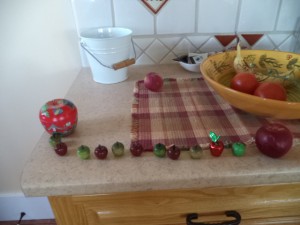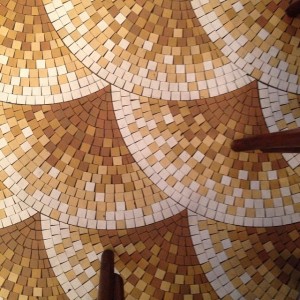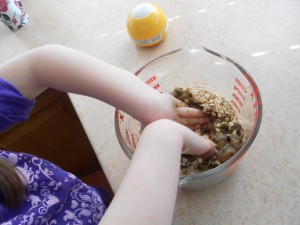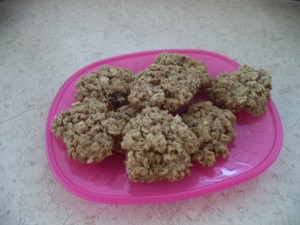Snow White Inspires Play-of-the-Day
This is a new series of blog posts combining reading with a play-of-the-day. While it’s still winter how about the story of Snow White before the snow is gone? If it’s all melted where you live, it’s okay because we’ll have some fun with apples too.
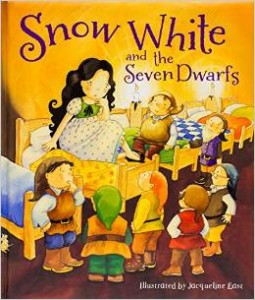 Snow White is the story of a lovely princess who has to run away from the evil queen. She finds shelter with 7 dwarfs until the evil queen, disguised as a witch, tricks her with a poisoned apple. She is revived with the touch of true love, delivered in a kiss from the prince. Because this is a traditional fairy story, books about Snow White are easy to find or you can tell the story. This version has lovely illustrations by Jacqueline East.
Snow White is the story of a lovely princess who has to run away from the evil queen. She finds shelter with 7 dwarfs until the evil queen, disguised as a witch, tricks her with a poisoned apple. She is revived with the touch of true love, delivered in a kiss from the prince. Because this is a traditional fairy story, books about Snow White are easy to find or you can tell the story. This version has lovely illustrations by Jacqueline East.
Since everyday needs some outside time, once you and your child have shared Snow White, you might be able to go for a walk in the snow. It there isn’t snow, you won’t be able to make snow balls, or snow angels, or play duck, duck, goose. Instead, you could look for little creatures and small homes. The dwarfs house was hidden in the forest, and if we look we can sometimes see homes for birds, squirrels, and bugs.
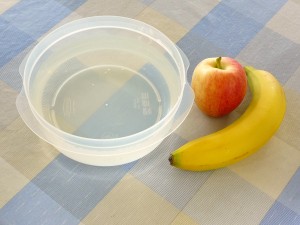 Back in the house, here is a fun apple science activity. Will an apple float or sink in water? Run some water into the kitchen sink or just a big bowl or container. You will need enough so the apple doesn’t just sit on the bottom. Have your child guess first what the apple might do, float on the top of the water or sink all the way to the bottom. Step two is to put the apple in the water and check the guess. What did it do? Try putting the apple in sideways and upside down and see if it does the same thing. You could try a banana too.
Back in the house, here is a fun apple science activity. Will an apple float or sink in water? Run some water into the kitchen sink or just a big bowl or container. You will need enough so the apple doesn’t just sit on the bottom. Have your child guess first what the apple might do, float on the top of the water or sink all the way to the bottom. Step two is to put the apple in the water and check the guess. What did it do? Try putting the apple in sideways and upside down and see if it does the same thing. You could try a banana too.
With such a nice clean apple, the best thing to do is to enjoy it. Apples make a great snack. What else can you do with an apple?

